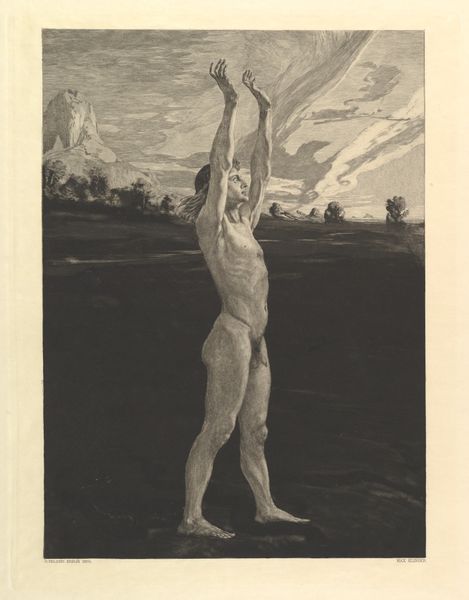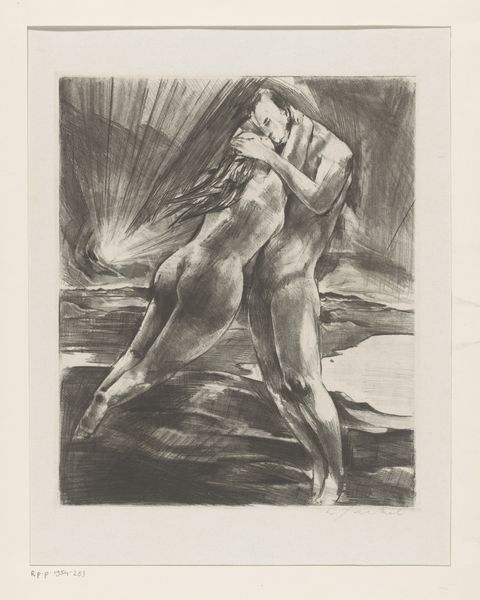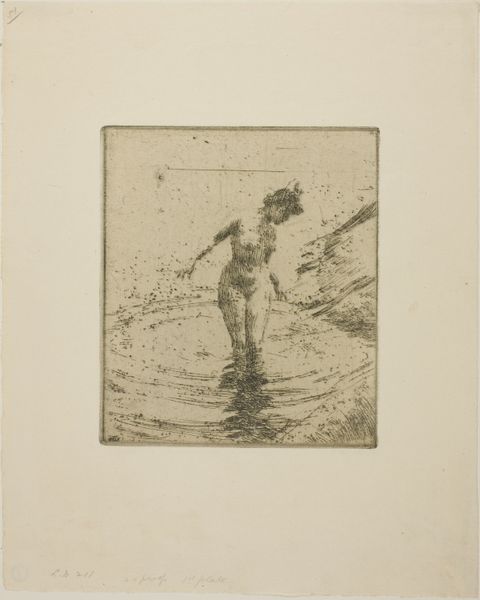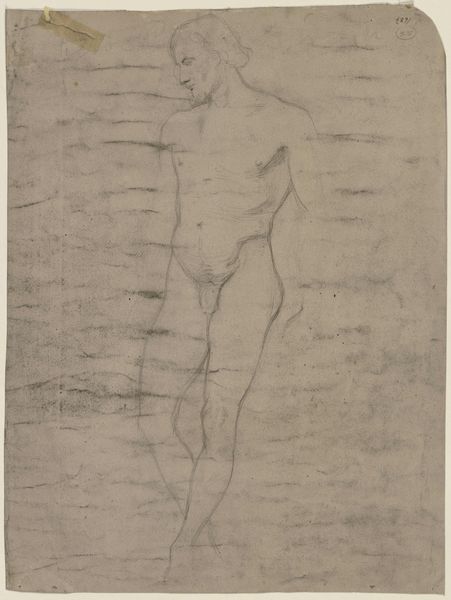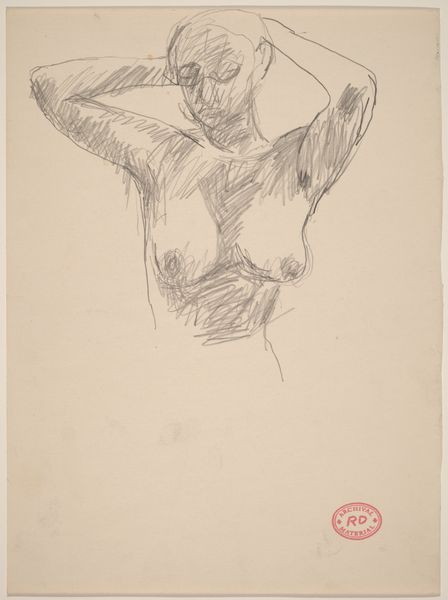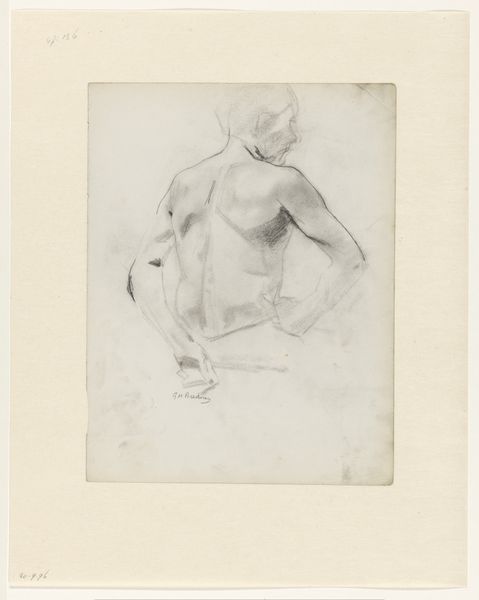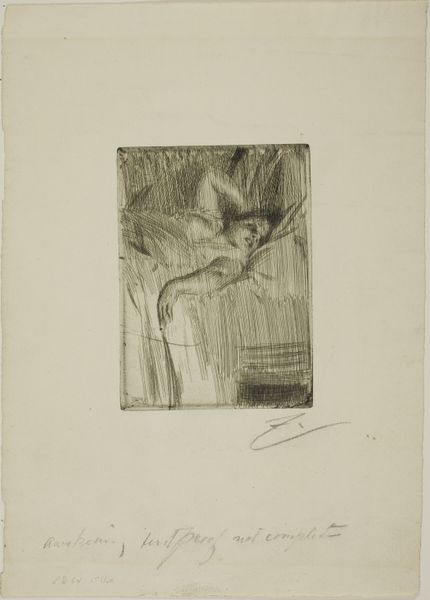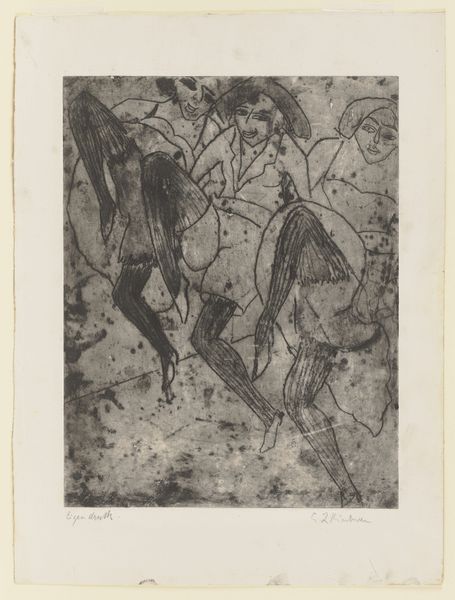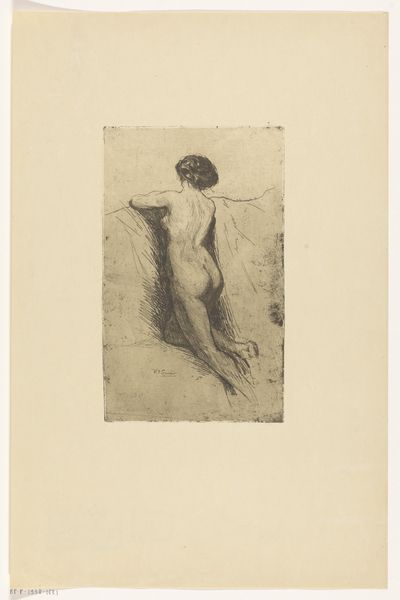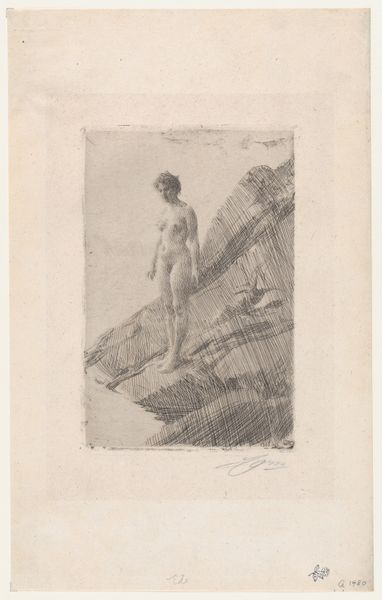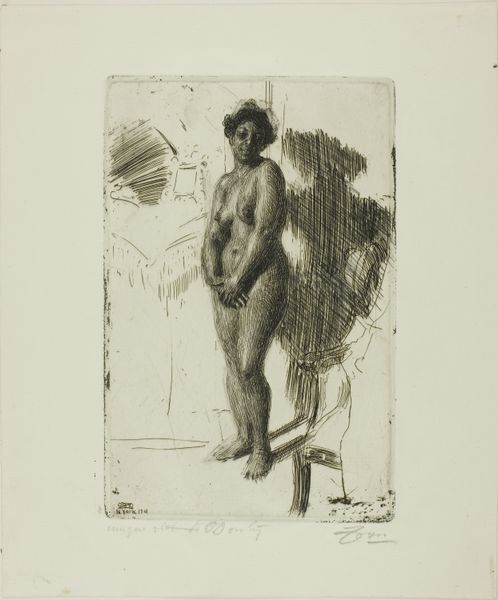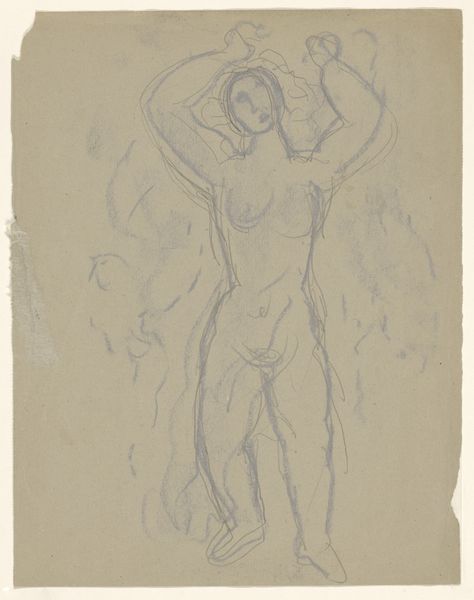
drawing, watercolor, ink
#
pencil drawn
#
drawing
#
figuration
#
watercolor
#
ink
#
symbolism
#
nude
#
watercolor
Dimensions: sheet: 43.3 x 32.2 cm (17 1/16 x 12 11/16 in.)
Copyright: National Gallery of Art: CC0 1.0
Curator: Max Klinger's 1883 work, "Und Doch!", employs ink, pencil, and watercolor on paper. It’s a rather striking composition. Editor: It certainly is. The monochrome palette lends it a sense of somber drama, wouldn’t you agree? The figure, almost starkly illuminated, is juxtaposed against a very brooding background. It gives me a feeling of confrontation. Curator: The symbolic weight feels palpable. Note the supplicant's gesture—hands raised, eyes fixed above—a posture familiar in religious iconography suggesting devotion or perhaps desperate appeal. But the ambiguity… What is being pleaded for, and from what abyss? Editor: And who are those submerged figures in the background? Are they meant to be part of this personal, silent drama? I immediately think of power structures here—it looks almost as if our main character is emerging, perhaps against his will, into some kind of harsh spotlight, while others drown. There's a political reading there. Curator: Klinger was deeply engaged with the symbolist movement, exploring subjective experiences and psychological states through allegorical representation. Water often symbolizes the unconscious, suggesting an emergence from deeper, perhaps troubled, psychological realms. I wonder, is this resistance? Editor: Exactly! This defiance—as translated in the work's very title—interests me greatly! But on what level? What structures are resisted by it, whether from political, gender, or personal struggles, for instance? I'm compelled to contextualize this as resistance against prevailing societal norms of the period. Klinger never shied away from the challenging subject matter of class structures, nor the way the culture of the time tried to push him toward more "conventional" work. Curator: That resonates. Art becomes a potent form of cultural critique, its visual vocabulary imbued with layered meaning accessible across time. Editor: Absolutely. In essence, the act of viewing becomes active participation. It can encourage a look in the symbolic mirror to understand not just what it might mean to Klinger, but how those images work to convey social messages that reverberate through us today. I love those nuances here. Curator: Indeed, this careful examination of this work by Klinger gives new meaning to images that challenge assumptions, reminding us that symbols do speak across generations and ideologies. Editor: It also points to our ability to constantly reconstruct the narratives art can build around the human condition, thus ensuring both continuity and change in how we read visual signs across eras.
Comments
No comments
Be the first to comment and join the conversation on the ultimate creative platform.
